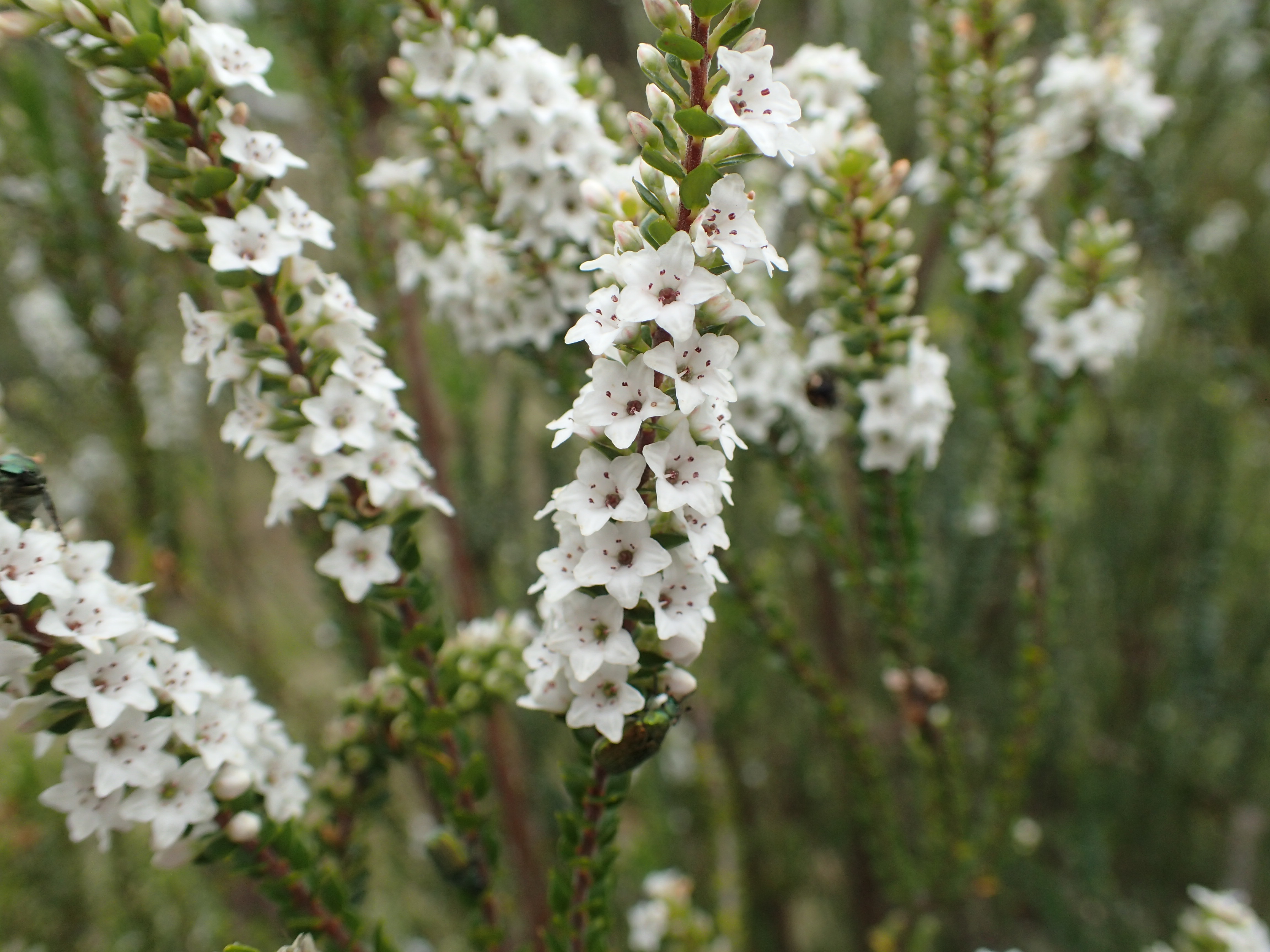Epacris Rhombifolia on:
[Wikipedia]
[Google]
[Amazon]
 ''Epacris rhombifolia'' commonly known as mountain coral heath, is a plant in the heath family Ericaceae and is endemic to eastern
''Epacris rhombifolia'' commonly known as mountain coral heath, is a plant in the heath family Ericaceae and is endemic to eastern
 ''Epacris rhombifolia'' commonly known as mountain coral heath, is a plant in the heath family Ericaceae and is endemic to eastern
''Epacris rhombifolia'' commonly known as mountain coral heath, is a plant in the heath family Ericaceae and is endemic to eastern Australia
Australia, officially the Commonwealth of Australia, is a Sovereign state, sovereign country comprising the mainland of the Australia (continent), Australian continent, the island of Tasmania, and numerous List of islands of Australia, sma ...
. It is an erect, multi-stemmed shrub with broad, rhombic leaves and white flowers with four petals, the flowers spreading down the branches. It only grows in wet, subalpine heath and is sometimes regarded as a variety of ''Epacris microphylla
''Epacris microphylla '', commonly known as coral heath, is a plant in the heath family Ericaceae and which is endemic to eastern Australia. It is a common, wiry shrub with tiny leaves that are often obscured by the flowers, especially near th ...
''.
Description
''Epacris rhombifolia'' is an erect shrub with several main stems and that typically grows to a height of up to 2 . Its young stems are reddish-brown and covered with short, soft, downy hairs when young. The leaves are rhombic, long and wide, more or less flat and overlapping each other when young. They are glabrous, have indistinct veins and a petiole long. The flowers are white, wide and arranged in leaf axils, spreading down the branches and have white petals forming a bell-shaped tube. The buds are surrounded by 16 to 20 white, egg-shapedbract
In botany, a bract is a modified or specialized leaf, especially one associated with a reproductive structure such as a flower, inflorescence axis or cone scale. Bracts are usually different from foliage leaves. They may be smaller, larger, or of ...
s and white, egg-shaped sepals long and longer than the petal tube. The petal tube is about long, wide and the lobes are about long and do not overlap. Flowering occurs from December to March and the fruit that follows are capsules about long and wide.
Taxonomy and naming
Mountain coral heath was first formally described in 1810 by Lilian Fraser and Joyce Vickery, who gave it the name ''Epacris microphylla'' var. ''rhombifolia''. The description was published in '' Journal and Proceedings of the Linnean Society of New South Wales''. The variety was raised to species level in 2015 by Yvonne Menadue and Ron Crowden. Thespecific epithet
In taxonomy, binomial nomenclature ("two-term naming system"), also called nomenclature ("two-name naming system") or binary nomenclature, is a formal system of naming species of living things by giving each a name composed of two parts, bot ...
(''rhombifolia'') is derived from the Latin words ''rhombus'' meaning "an equilateral parallelogram with unequal pairs of
angles" and ''folium'' meaning "leaf".
Distribution and habitat
''Epacris rhombifolia'' grows in wet heath in subalpine areas of Lake Mountain,Mount Baw Baw
Mount Baw Baw is a mountain summit on the Baw-Baw Plateau of the Great Dividing Range, located in Victoria, Australia. The name is from the Woiwurrung language spoken by Eastern Kulin people. It is of uncertain meaning, but possibly signifies, ...
and the ranges north of Licola in Victoria and in the Barrington Tops, Wingello and Oberon districts of New South Wales.
Conservation status
This species of ''Epacris'' is listed as "endangered" under the Victorian Government ''Flora and Fauna Guarantee Act 1988
The ''Flora and Fauna Guarantee Act 1988'', also known as the ''FFG Act'', is an act of the Victorian Government designed to protect species, genetic material and habitats, to prevent extinction and allow maximum genetic diversity within the Au ...
''.
Use in horticulture
Mountain coral heath has horticultural merit with its display of dainty flowers. It is suitable for a small, permanently moist, sheltered garden and can be grown in containers.References
{{Taxonbar, from=Q22285165 rhombifolia Ericales of Australia Flora of New South Wales Flora of Victoria (state) Plants described in 1810